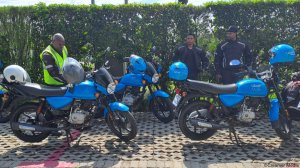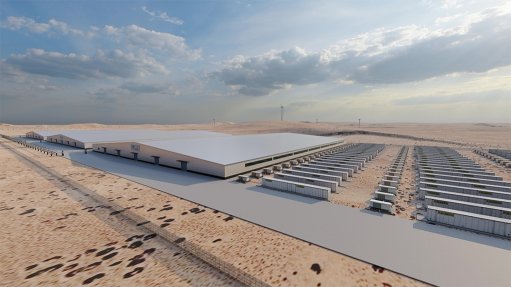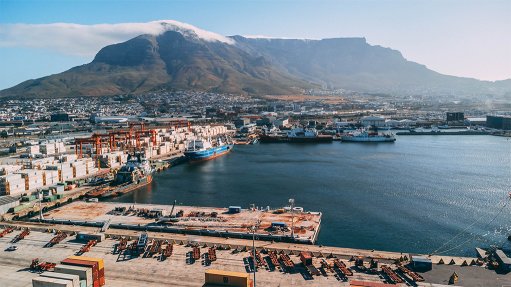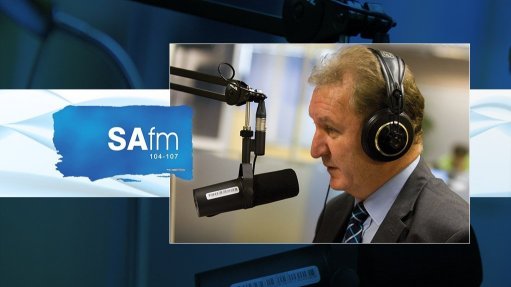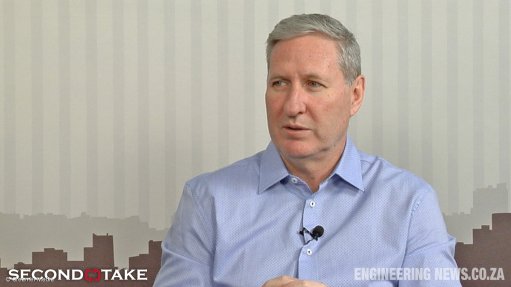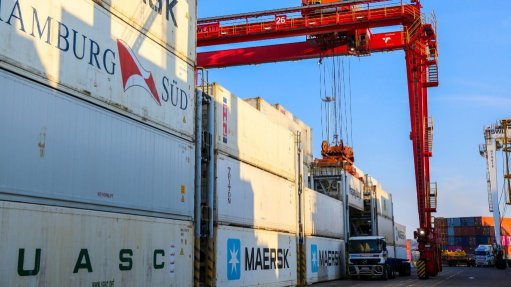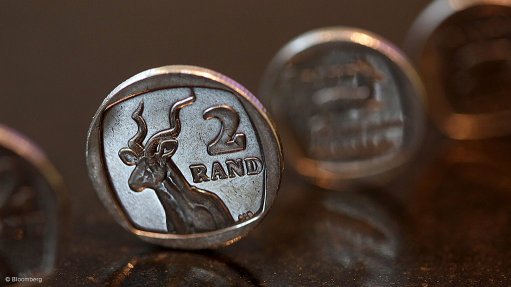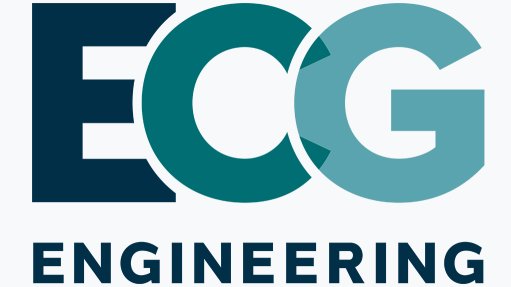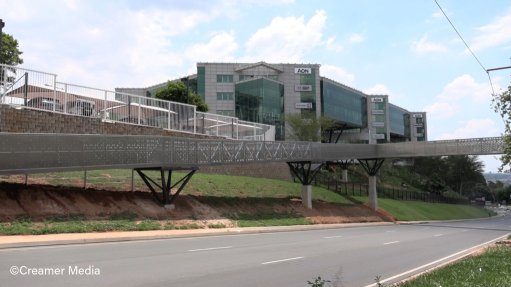Uber launches electric offering in South Africa, showcases Moto product


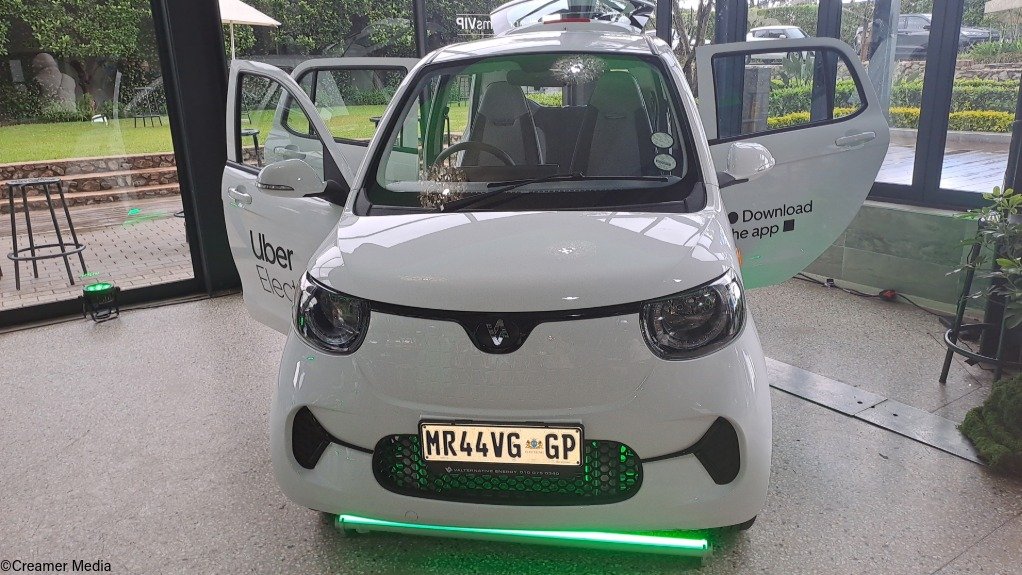
Uber sub-Saharan Africa GM Deepesh Thomas welcomes the company’s new low-cost mobility product offerings
Uber Moto
Photo by Creamer Media's Tasneem Bulbulia
Uber Go Electric is the company’s first fully-electric four wheeler product in South Africa, operated through fleet partner Valternative
Photo by Creamer Media's Tasneem Bulbulia
Transport company Uber on November 24 launched its Uber Go Electric offering for South Africa at an event in Johannesburg, and also used the occasion to highlight its recently-established Uber Moto offering.
The two offerings are part of the company’s low-cost mobility journey, aimed at providing an Uber option for the about 40% of the people in the country that do not have access to reliable, safe and sustainable transport, Uber sub-Saharan Africa GM Deepesh Thomas explained to Engineering News at the launch.
“Right now, we serve about 10% to 15% of the population. Many people can’t afford to take Uber rides,” he pointed out.
Uber Moto is the cheapest option on the platform, while Uber Electric is the second.
Moreover, the products align to Uber’s sustainability goals, with a group target to be fully electric by 2040, which includes its operations in South Africa.
Both products are intended for “last-mile” travel, aimed at transporting commuters over shorter distance to reach their destinations or connect with another mode of transport quickly and affordably.
As such, these compact products are currently not allowed on highways.
UBER ELECTRIC
Uber Go Electric is the company’s first fully-electric four wheeler product in South Africa, operated through fleet partner Valternative.
Clean energy implementation company Valternative sources the vehicles from China and leases them to the drivers, with a lease-to-own option also available.
This builds on Uber’s entrenched partnership with the company for its electric courier delivery offering, with Valternative now having added a category for four wheel vehicles.
As with other fleet partners, Valternative is onboarded to the Uber platform. It provides the vehicles and drivers, and Uber provides the demand generation and community guidelines for how to operate on the platform.
The aim is to leverage the partnership with Valternative to provide electric vehicles (EVs) to drivers in a more financially practical way, Thomas said.
Uber Electric aims to improve the economics of earning by removing the considerable burden of fuel costs for drivers.
It is anticipated that this would ensure lower operating expenses, fewer mechanical issues and more predictable running costs, enabling drivers to retain a greater share of their income.
Thomas highlighted that the vehicles are much smaller than a typical hatchback, engendering lower costs. Moreover, the introduction of electric mobility at the most accessible end of Uber’s portfolio challenges the notions that all EVs are too expensive and inaccessible, he averred.
Uber has already started with piloting this offering in Johannesburg. The approach is to begin with a small geography of Sandton and Rosebank. This would allow the company to test the charging infrastructure, vehicle run time and demand, among other aspects, and over time, scale up, Thomas explained.
Commuters are expected to benefit from a quieter vehicle, with trips at an affordable price point; while the environment is expected to benefit from reduced emissions as EVs gain prominence.
“Electric mobility becomes meaningful when it’s accessible. By managing charging, servicing and fleet operations, we ensure drivers can adopt electric vehicles without carrying upfront risk. We also remove the friction of daily cash flow that is required by providing an all-inclusive ecosystem. It is our intention that all of this leads to riders and drivers being able to increase their net earnings,” Valternative CEO Mohamed Jeewa averred.
While Uber started the electrification journey a while ago, the four wheeler product only became feasible in the country once there was broader market investment in charging Infrastructure, Thomas pointed out.
The company started pursuing Uber Electric for South Africa about a year and half ago, and launched the product this year.
Thomas highlighted that it is bullish about the potential to scale this offering up, as charging infrastructure improves in the country and the costs come down, with grid improvements and diversification also supporting this. The vehicles are interoperable, able to use existing charging infrastructure.
UBER MOTO
Uber Moto allows commuters to access a trained and vetted motorbike driver through the Uber app, and then be transported as a single passenger on the back of a motorbike. While this is a common service across Africa and other markets, it is a pioneer offering in South Africa, Thomas highlighted.
This offering is undertaken with fleet partner, local taxi association aggregator Africa Moova, which provides the bikes and drivers.
Given that this is a new category being created in the country, drivers have to go through a formal licensing process to ensure that they can transport someone safely on the back of a motorbike, Thomas emphasised.
Also, helmets are compulsory for both riders and new hairnets are provided for each customer for hygiene purposes. Drivers are equipped with personal protective equipment like shin guards and protective jackets.
The company started pursuing Uber Moto more than a year ago, undertaking groundwork including policy engagement to ensure that the product was compliant, and liaising with the taxi industry to demonstrate that it would be a complimentary product and not a competitive one, Thomas explained.
It was launched in mid-January this year with a modest pilot in a small area in Johannesburg, and has since been expanded to 20 different suburbs, boasting over 200 motorbikes.
Thomas said that the company does have plans to expand the offering across more areas in Johannesburg, as well as other cities, depending on the demand.
“We’re building mobility that reflects the realities of South Africans. Uber Moto has shown us just how powerful, affordable, reliable movement can be in opening doors for people – from daily commuters to parents, shift workers and students,” he highlighted.
Meanwhile, advisory firm Citycon Africa consultant Vuyi Majola underscored the importance of integrated transport planning, including collaboration with the private sector. She indicated the need reduce the cost of regulations, to ensure that drivers are able to access these lower-cost offerings.
Article Enquiry
Email Article
Save Article
Feedback
To advertise email advertising@creamermedia.co.za or click here
Comments
Press Office
Announcements
What's On
Subscribe to improve your user experience...
Option 1 (equivalent of R125 a month):
Receive a weekly copy of Creamer Media's Engineering News & Mining Weekly magazine
(print copy for those in South Africa and e-magazine for those outside of South Africa)
Receive daily email newsletters
Access to full search results
Access archive of magazine back copies
Access to Projects in Progress
Access to ONE Research Report of your choice in PDF format
Option 2 (equivalent of R375 a month):
All benefits from Option 1
PLUS
Access to Creamer Media's Research Channel Africa for ALL Research Reports, in PDF format, on various industrial and mining sectors
including Electricity; Water; Energy Transition; Hydrogen; Roads, Rail and Ports; Coal; Gold; Platinum; Battery Metals; etc.
Already a subscriber?
Forgotten your password?
Receive weekly copy of Creamer Media's Engineering News & Mining Weekly magazine (print copy for those in South Africa and e-magazine for those outside of South Africa)
➕
Recieve daily email newsletters
➕
Access to full search results
➕
Access archive of magazine back copies
➕
Access to Projects in Progress
➕
Access to ONE Research Report of your choice in PDF format
RESEARCH CHANNEL AFRICA
R4500 (equivalent of R375 a month)
SUBSCRIBEAll benefits from Option 1
➕
Access to Creamer Media's Research Channel Africa for ALL Research Reports on various industrial and mining sectors, in PDF format, including on:
Electricity
➕
Water
➕
Energy Transition
➕
Hydrogen
➕
Roads, Rail and Ports
➕
Coal
➕
Gold
➕
Platinum
➕
Battery Metals
➕
etc.
Receive all benefits from Option 1 or Option 2 delivered to numerous people at your company
➕
Multiple User names and Passwords for simultaneous log-ins
➕
Intranet integration access to all in your organisation



